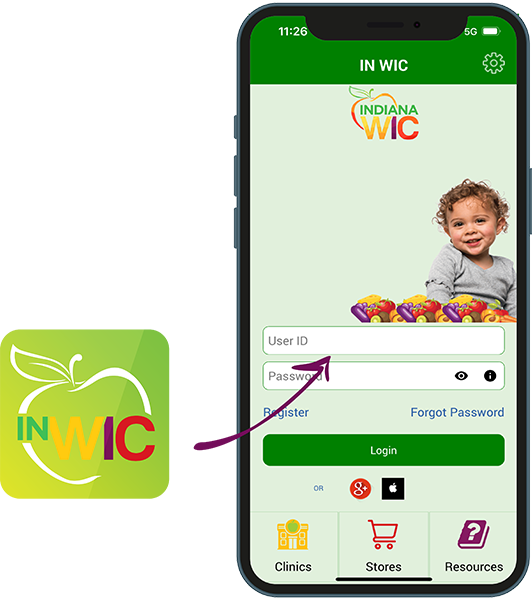h2 hide
WIC cu zeidah a si?
WIC cu nau pawimi le fa a ngei dihkami hrintu nu pawl, bawhte pawl le, ngakchia pawl tha tein an einak le ngandam in an umnak a bawmmi program pakhat a si.
Ahodah an tlak?
- Nu fa a pawimi pawl;
- Nau a ngei ka mi nu le pa pawl (fa hrin hnu thla ruk tiang);
- Nau Hnukdinmi hringtu nulepa (fa hrin hnu kum khat cung);
- Bawhte pawl (kum khat tanglei tiang);
- Ngakchia kum nga tanglei pawl.
Nangmah cu Indiana ah na um hrim a hau ii tangka lutmi lam hmuhsaknak pawl na tlinh a hau, kaa zawn kutken cazual ii a hnu lei ah silole wic.in.gov ah hmuh khawhmi.

WIC nih zeidah a pek?
- A tharhlammi a khuacaan i a ummi eidin itelin a khunlei eidin herhnak caah tlak dingah ngan a dammi eidin;
- Eidin le ngandamnak lei screen nak le zohfelnak;
- Eidin lei cawnpiaknak le fimchimhnak;
- Nau hnukdinh bawmhnak, WIC sin in nau hnuk a dinmi hringtu nulepa hna caah thaumnak rawl pawl peknak, Peer Counselor pawl sin in pumpak bawmhnak, le hnuk dinhnak lei thiamsang hna he pehtlaihnak;
- Indiana ngandamnak, innchungkhar, le social service hna ah referral pawl.
WIC nih zeitindah a pek?
Minkhumhnak le thathnemnak pawl laaknak ah a lak in tlawnnak caah na zatlang bu chung WIC Siikhaan Umnak pawl Cazin WIC Clients (Riantuanpiakmi) tang wic.in.gov ah siikhaan konglam cu hmuh a si kho. Itonnak hmasa bik ah, na innchungkhar cu a tthahnemmi rian WIC pekmi dihlak co dingah an tlak lai.
- Cawhnuk le cawhnuk he aa pehtlaimi thil chuahmi pawl
- Thingthei le Anhnah pawl
- Arti pawl
- Cereal
- Whole grains (bread, rice, tortillas)
- Tofu
- Ngakchia eidin
- Bawhte Formula
INWIC App cu zeicaah hman a si?


Hmuhmi tangka caah Tlaknak
Medicaid, Supplemental Nutrition Assistance Program (SNAP, A Chapmi Eidin Bawmnak Program), asiloah Temporary Assistance for Needy Families (TANF, Caan Tawite ca Si a Fakmi Innchungkhar Bawmnak) a hmu cangtu innchungkhar hna cu WIC program caah income eligible caan a tlakmi an si.
Innchungkhar* chungtel zat
Kum fatin hmuhmi tangka, $ hi zat tiang (zuh hlan ah a dihlak fonhmi)
1
2
3
4
5
6
7
8
Thla fatin hmuhmi tangka, $ hi zat tiang (zuh hlan ah a dihlak fonhmi)
1
2
3
4
5
6
7
8
Zarh fatin hmuhmi tangka, $ hi zat tiang (zuh hlan ah a dihlak fonhmi)
1
2
3
4
5
6
7
8
Fa na pawi ahcun, nangmah kha pahnih (2) bantukah na irel lai.
Chungtel 8 nak a tam deuh innchungkhar hna caah, a tharmi chungtel pakhat cio caah kum fatin a chapmi $8,732 pek a si lai.
*Innchungkhar ticu mipi bu khat (aa pehtlai siseh pehtlai lo siseh) economic unit pakhat tangi a nungmi hna kha an si.
Hlawh hmuhmi tangka caah aa tlakmi sinak
| Innchungkhar* chungtel zat ahmet ngan | Kum fatin hmuhmi tangka, $ hi zat tiang (zuh hlan ah a dihlak fonhmi) |
Thla fatin hmuhmi tangka, $ hi zat tiang (zuh hlan ah a dihlak fonhmi) |
Zarh fatin hmuhmi tangka, $ hi zat tiang (zuh hlan ah a dihlak fonhmi) |
|---|---|---|---|
| 1 | $27,861 | $2,322 | $536 |
| 2 | $37,814 | $3,152 | $728 |
| 3 | $47,767 | $3,981 | $919 |
| 4 | $57,720 | $4,810 | $1,110 |
| 5 | $67,673 | $5,640 | $1,302 |
| 6 | $77,626 | $6,469 | $1,493 |
| 7 | $87,579 | $7,299 | $1,685 |
| 8 | $97,532 | $8,128 | $1,876 |
Fa na pawi ahcun, nangmah kha pahnih (2) in naa rel lai.
Chungtel 8 nak a tam deuh innchungkhar hna caah, a harmi chungtel pakhat cio caah kum fatin a chapmi $9,953 pek a si lai.
*Innchungkhar ticu mipi bu khat (aa pehtlai siseh pehtlai lo siseh) economic unit pakhat tang i a nungmi hna kha an si.
Thawngpang tam deuh silole na pawnghrawng ah siikhaan kawlnak ding caah, inwic@health.in.gov ah email kua, 800-522-0874 ah chawn silole wic.in.gov ah kan website rak lut.